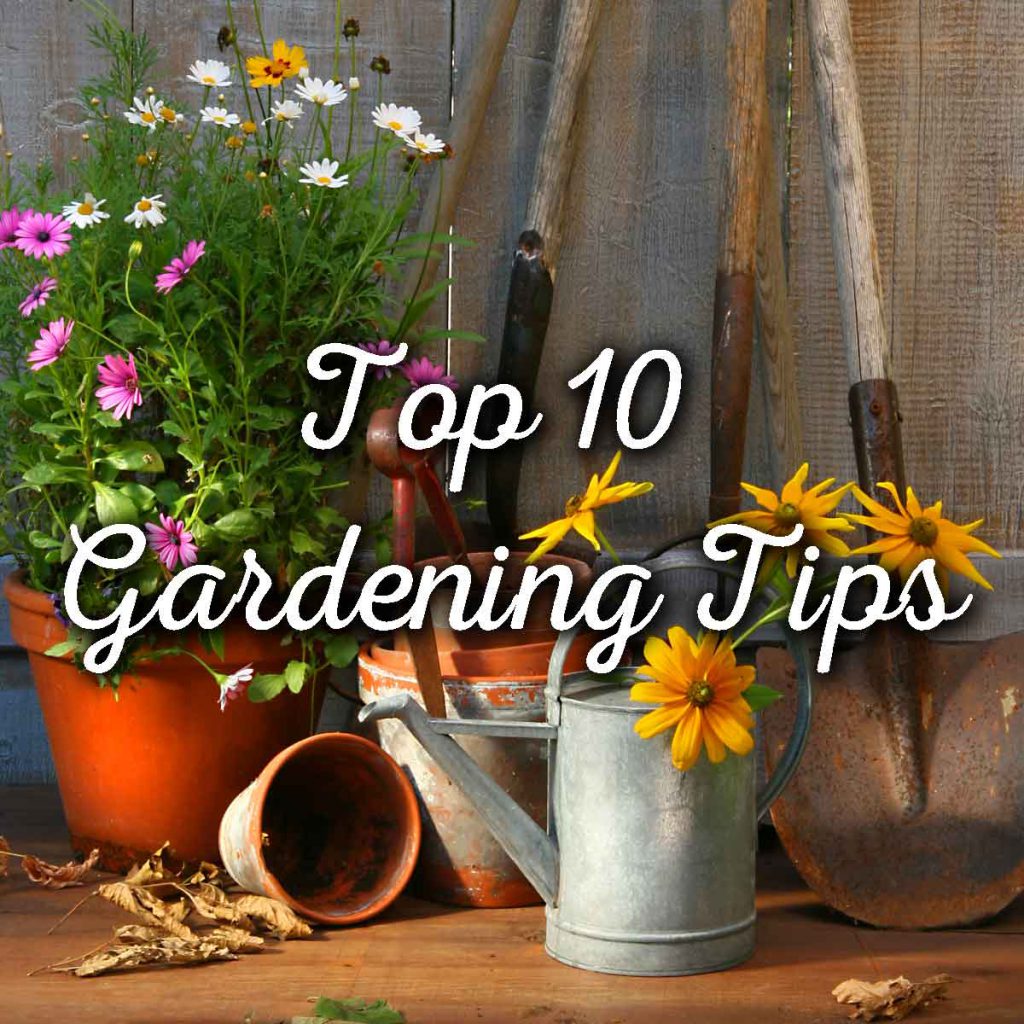Top 10 Gardening Tips

1 - Watch out for frosts. Protect delicate plants, frost is particularly damaging to tender new growth plants. The risks of frost damage can be reduced by taking some simple steps to protect the plants in your garden such as:
• Select planting positions carefully to avoid ‘Frost pockets’
• Grow slightly tender plants in a warm sunny spot
• Cover plants with a layer of fleece
• Protect fruit and strawberries with straw
2 - Earth up potatoes, and promptly plant any ones you have remaining - The tubers vary in size, colour, texture and taste and can be grown from spring to autumn.
3 - Plant out summer bedding at the end of the month (avoid planting in cold areas) - bedding plants provide a temporary decorative seasonal display for beds, borders, containers and hanging baskets. Bedding can be grown from seed, bought as young seedlings (plug plants) or purchased as pot-grown specimens, often in multi-packs and cellular trays, ready for planting.
4 - Water early and late to get the most out of your water, recycle water by collecting rain water using a water butt to save using household water (and it’s better for the plants too!) We recommend you clean the water butt annually to prevent disease growing in the collected water.
5 - Regularly hoe off weeds - Weeds can be controlled without resorting to weed killers. Consider non-chemical solutions first, but if a chemical control is used, follow the instructions accurately to ensure that people, pets and the wider environment are kept safe.
6 - Open greenhouse vents and doors on warm days - Greenhouses, whether of glass or plastic, can overheat in sunny weather. Plants can be protected from excess heat by shading and good ventilation.
7 - Mow lawns weekly - All lawns need mowing; it is one of the most frequent, and most important, tasks in maintaining a healthy lawn.
8 - Hedges require maintenance trimming to keep them within bounds. Pruning times vary depending on the type of hedge. Be sure to check for nesting birds before clipping hedges.
9 - Lift and divide overcrowded clumps of spring-flowering bulbs - Only lift and store bulbs where this is practical. Those naturalised in areas of grass or planted in borders or containers where they are underneath and coming up through shrubs or perennials may be left in the garden during the dormant season. Once the foliage has died down, carefully lift and clean the bulbs. Trim back roots and the outer layers of loose, flaking tunic. Lay bulbs on a tray to dry for 24 hours to help prevent fungal rots developing in storage. Put the bulbs in labelled paper bags or nets and store in a dry, cool place.
10 - Watch out for viburnum beetle and lily beetle grubs - Viburnum beetle can defoliate viburnums. Most of the damage is caused by the larvae in spring. Heavy attacks can result in most of the foliage being severely damaged by late spring.





